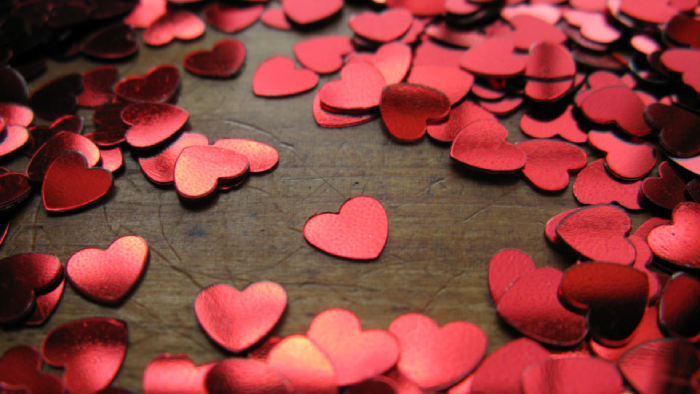Embark on a captivating journey through time as we unveil the enigmatic tapestry of Valentine’s Day history facts. Delve into the origins, traditions, and cultural nuances that have shaped this romantic celebration. Join us in exploring the hidden gems and captivating stories that make Valentine’s Day a timeless and intriguing chapter in the book of love.
Contents
What is Valentine’s Day?
Valentine’s Day, observed annually on February 14th, is a celebration of love and affection between intimate companions. Originating from ancient Roman and Christian traditions, the day has evolved into a global celebration marked by the exchange of heartfelt expressions and, often, bespoke gifts. In understanding the roots of this celebration, we unlock a world of cultural significance that transcends time.
- Ancient Traditions and Celebrations
Unveiling Valentine’s Day history facts, we trace the roots to ancient Roman fertility festivals like Lupercalia. This historical foundation, characterized by matchmaking and fertility rites, evolved over time, merging with Christian traditions. Today, it stands as a day honoring St. Valentine, marked by expressions of love through gestures and tokens.
- Modern-Day Celebrations and Trends
In the modern era, Valentine’s Day has transformed into a global celebration with various customs and trends. From the exchange of chocolates, flowers, and bespoke occasion gifts to elaborate romantic dinners, the day has become a commercialized but cherished occasion. As we navigate through the evolution of these celebrations, the essence of expressing love remains at the core of the festivities.

- Symbolism and Iconography
The symbolism and iconography associated with the facts of Valentine’s Day are as diverse as the cultures that celebrate it. The red rose, heart-shaped chocolates, and Cupid’s arrow are universal symbols of love and desire. Unraveling the significance of these symbols adds depth to the understanding of the emotional connections that make Valentine’s Day an iconic celebration.
30 Valentine’s Day History Facts
Venturing into the heart of Valentine’s Day history, let’s explore an extensive list of 30 facts about Valentine’s Day that chronicle the evolution of this beloved celebration. From ancient anecdotes to modern-day Valentine’s Day trivia, these facts weave a tapestry of love, tradition, and cultural influences that have shaped the celebration throughout the centuries.
Valentine’s Day Black History Facts
In acknowledging diverse celebrations, let’s spotlight Valentine’s Day history facts, highlighting the significant impact of Black individuals on this romantic occasion. And as we ponder how many days are until Valentine’s Day, we delve into a narrative that transcends time and embraces the diverse expressions of love within the Black community.

- During the Harlem Renaissance, Valentine’s Day became a symbol of cultural expression, with poets and artists incorporating the celebration into their work.
- Madam C.J. Walker, an influential African American entrepreneur, contributed to the Valentine’s Day tradition by promoting beauty and self-love.
- The renowned poet Langston Hughes often incorporated themes of love and relationships, including Valentine’s Day, into his prolific body of work during the Harlem Renaissance.
- Black-owned floral businesses, particularly during the mid-20th century, played a vital role in providing unique and culturally significant floral arrangements for Valentine’s Day.
- The iconic singer and activist Nina Simone expressed the complexities of love through her music, leaving an indelible mark on Valentine’s Day celebrations.
- The Black Arts Movement of the 1960s and 1970s saw a resurgence of artistic expressions related to love, with Valentine’s Day becoming a canvas for social and cultural commentary.
- The jazz age witnessed a surge in Valentine’s Day celebrations, reflecting the rich cultural tapestry of the Black community.

- Black-owned businesses have played a significant role in crafting unique and meaningful Valentine’s Day gifts.
- The Black church community has embraced Valentine’s Day, emphasizing the importance of love and unity within families.
- Black artists have influenced Valentine’s Day music, creating soulful melodies that resonate with the spirit of love.
- The Black Lives Matter movement has inspired expressions of love and solidarity on Valentine’s Day, highlighting the ongoing fight for justice and equality.
- In the spirit of love and empowerment, Black communities often organize Valentine’s Day events that celebrate resilience, unity, and the strength of relationships within the community.
- Black educators and leaders have contributed to Valentine’s Day education initiatives, using the occasion to foster discussions about love, history, and cultural diversity.
- The vibrant colors associated with Valentine’s Day take on added significance in the Black community, symbolizing unity, strength, and the beauty of diverse expressions of love.
- Influential Black couples, both historical and contemporary, often use Valentine’s Day as an opportunity to share their love stories, inspiring others to celebrate and cherish their relationships.
Amazing Valentine’s Day History Facts
Get ready to be amazed by seven incredible cool facts about Valentine’s Day facts that go beyond the ordinary. These extraordinary facts of Valentine’s Day will bring a layer of enchantment to your understanding and appreciation of this romantic celebration.

- In the 19th century, the first mass-produced Valentine’s Day cards were adorned with lace and intricate designs, capturing the Victorian era’s romantic sensibilities.
- Shakespeare’s influence on Valentine’s Day is profound, as his sonnets and plays immortalize the themes of love and passion still celebrated today.
- During World War II, soldiers sent Valentine’s Day cards from the front lines, creating a connection between love and hope amidst the chaos of war.
- The oldest known Valentine’s Day poem was written by Charles, Duke of Orleans, while he was imprisoned in the Tower of London in the 15th century.
- Victorians believed in the language of flowers, and each bloom carried a specific sentiment. Red roses, synonymous with love, became the quintessential Valentine’s Day flower during this era.
- Charles Dickens, another literary giant, often wrote about love in his novels, contributing to the romantic ethos that permeates Valentine’s Day celebrations.
- The tradition of sending anonymous Valentine’s Day cards gained popularity in the 18th century, allowing individuals to express their feelings discreetly.
- During the Victorian era, heart-shaped lockets containing portraits or locks of hair became treasured Valentine’s Day gifts, symbolizing romantic attachment.

- In the early 20th century, Valentine’s Day postcards featured intricate designs, clever wordplay, and hidden messages, adding an extra layer of charm to expressions of affection.
- The rise of the printing press in the 19th century facilitated the mass production of Valentine’s Day cards, making the tradition more accessible to a broader audience.
- In medieval times, Valentine’s Day festivities often included poetic contests, where individuals competed to compose the most romantic verses in honor of their beloved.
- The association of doves with love and romance dates back to ancient mythology, and these birds often adorned Valentine’s Day cards as symbols of enduring affection.
- The heart-shaped chocolate box, a classic Valentine’s Day gift, was introduced by Richard Cadbury in the late 19th century.
- Pope Gelasius I officially declared February 14th as Valentine’s Day in the 5th century, solidifying its place in the Christian calendar.
- The tradition of exchanging love notes on Valentine’s Day dates back to the Middle Ages, with handwritten messages expressing affection and admiration.
Fun Facts about Valentine’s Day History
As we continue our journey through the annals of Valentine’s Day history facts, let’s lighten the mood with entertaining and lighthearted amazing facts about Valentine’s Day that showcase the whimsical side of this beloved celebration.

- The oldest known valentine still in existence dates back to the 15th century, displaying intricate craftsmanship and poetic declarations of love.
- In the medieval era, superstitions suggested that the first unmarried person of the opposite sex one met on Valentine’s Day would become their future spouse.
- Cupid, the symbol of love, was also known in Roman mythology as the son of Venus, the goddess of love and beauty.
- The tradition of wearing your heart on your sleeve, an idiom expressing one’s emotions openly, finds its origins in medieval Europe, where individuals would draw names of their valentine from a hat.
- The world’s largest heart-shaped diamond, known as the “Heart of Eternity,” weighs 27.64 carats and serves as a testament to the enduring allure of heart-shaped symbols in love.
- In Japan, it is customary for women to give chocolates to men on Valentine’s Day, with men reciprocating the gesture on White Day, celebrated on March 14th.
- The concept of a “Cupid’s Arrow” comes from Roman mythology, where Cupid, the god of desire, was believed to strike individuals with arrows, causing them to fall deeply in love.
- The earliest recorded association between St. Valentine and romantic love dates back to Geoffrey Chaucer’s poetry in the 14th century, cementing the connection between the saint and love.
- Valentine’s Day has inspired various quirky celebrations worldwide, including a mass wedding ceremony held annually at the Empire State Building in New York City.

- The heart shape’s representation of love is thought to have originated from the ancient Roman silphium seed, believed to have contraceptive properties and associated with Venus, the goddess of love.
- The symbolic exchange of keys on Valentine’s Day has medieval roots, symbolizing the unlocking of one’s heart and trust in a romantic relationship.
- In Finland and Estonia, Valentine’s Day is not only a celebration of romantic love but also an occasion to appreciate friendships.
- The Italian city of Verona, known for Shakespeare’s “Romeo and Juliet,” receives thousands of letters addressed to Juliet on Valentine’s Day.
- The red rose, a quintessential symbol of love, was the favorite flower of Venus, reinforcing its connection to Valentine’s Day.
- The heart-shaped symbol was not initially associated with the human heart but with the silphium plant’s seed, believed to have contraceptive properties.
Ideas to Celebrate a Memorable Valentine’s Day
Now that we’ve uncovered the rich tapestry of Valentine’s Day history facts, let’s explore creative and memorable ways to celebrate this romantic occasion. Whether you’re planning a romantic getaway, a personalized culinary experience, or a meaningful journey down memory lane, these ideas will ensure a Valentine’s Day to remember.

- Romantic Getaway Adventure
Embark on a journey of love with a romantic getaway. Whether it’s a secluded beach retreat, a charming countryside bed-and-breakfast, or a vibrant city escape, the key is to create cherished moments together. Reconnect with your loved one amidst picturesque landscapes or vibrant cityscapes, savoring the essence of togetherness.
- Personalized Culinary Experience
Indulge in the art of culinary romance with a personalized dining experience. Whether you’re cooking together at home or dining at a gourmet restaurant, let the flavors of love enhance your connection. Explore new recipes, share favorite dishes, and savor each moment, making the dining experience a celebration of your unique bond.
- Meaningful Memory Lane Journey
Take a stroll down memory lane, reliving the moments that have defined your relationship. Visit the place where you first met, recreate your first date, or reminisce about shared adventures. Sharing memories and reflecting on the journey will deepen your connection, making Valentine’s Day a celebration of your unique love story.
Conclusion
In conclusion, Valentine’s Day is not merely a day marked by the exchange of gifts; it is a celebration deeply rooted in history, traditions, and the universal language of love. As we honor the past and revel in the present, let the rich tapestry of Valentine’s Day history facts inspire us to create meaningful and memorable celebrations. May your Valentine’s Day be filled with warmth, joy, and the timeless magic of love.






